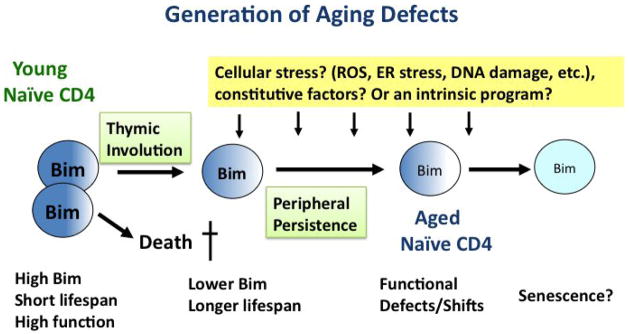Figure 2. Generation of Aging Defects.
We purpose that the decrease in RTE associated with adolescence, induces pathways that mediate reduction in Bim and that this reduction in Bim increases naïve CD4 lifespan. Our data supports the model that the longer persistence of the naïve T cells facilitates the development of age-associated changes. The factors directly responsible for those changes are not known, but the fact that defects can develop in 6–8 months in mice with reduced Bim, indicate that a highly aged environment is not necessary and point to a role for constitutive factors or a intrinsic program of some sort.

